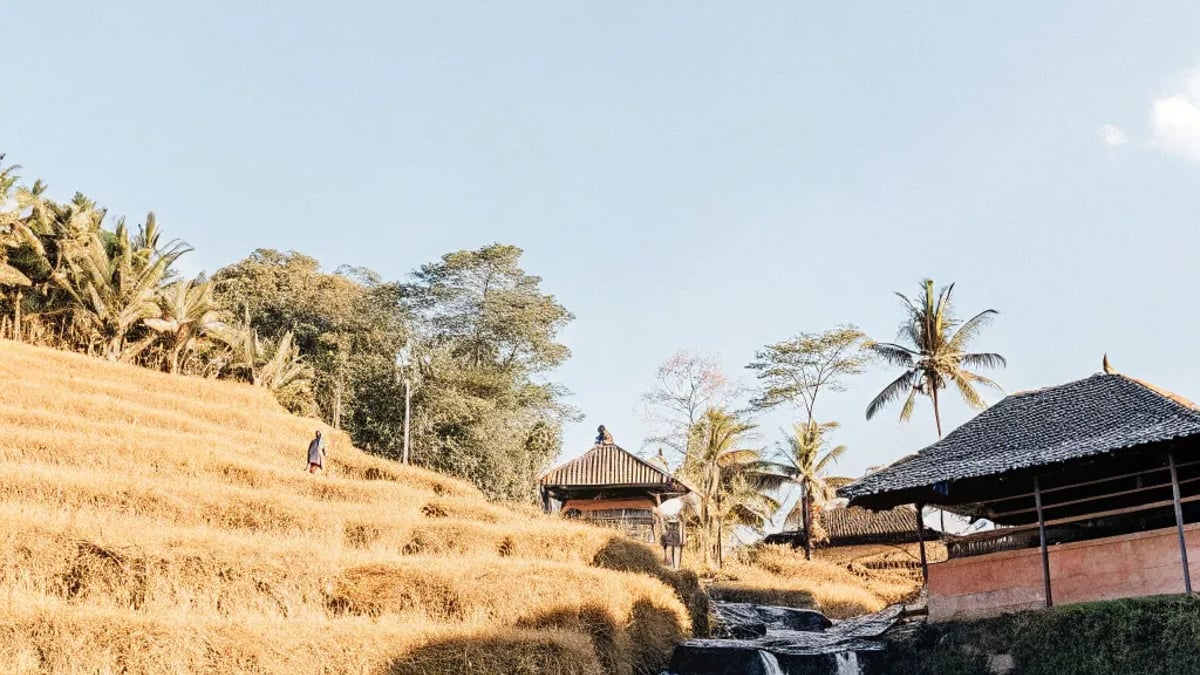
Bali has long captured travelers' hearts with its stunning beaches and vibrant culture. But beyond the crowded shores of Kuta and the Instagram hotspots of Ubud lies a different Bali—one of quiet villages, untouched landscapes, and authentic experiences that reveal the island's true spirit. If you're looking to venture beyond the well-trodden path, this guide will help you discover the hidden side of the Island of the Gods.
Discovering Bali's Hidden Villages
The heart of authentic Balinese culture beats strongest in its traditional villages. While tourists flock to Ubud's monkey forest, consider heading to Sidemen instead. This peaceful valley, about an hour's drive east, offers breathtaking views of terraced rice fields with Mount Agung looming in the background. The area remains refreshingly undeveloped, with local farmers still working the land using age-old techniques.
"Sidemen gave me exactly what I was looking for—a glimpse of rural Balinese life without the tourist infrastructure," shares travel blogger Maria Santos. "I spent a morning helping a local family harvest rice and learned more about Balinese culture than I did in a week in Ubud."
Another gem is Tenganan, one of Bali's oldest villages and home to the Bali Aga people, who maintain pre-Hindu traditions. Here, you can witness the creation of rare double-ikat textiles, a complex weaving technique found in only a handful of places worldwide.

Sacred Spaces Off the Map
While Tanah Lot and Uluwatu temples see busloads of visitors daily, Bali hosts numerous sacred sites that remain peaceful sanctuaries.
Pura Lempuyang, often called the "Gateway to Heaven," has gained popularity in recent years but still feels worlds away from the tourist centers. The temple complex consists of seven sanctuaries spread across the mountain, with most visitors only seeing the famous gates at the lowest level. Hike to the upper temples for a more spiritual experience and far fewer crowds.
For a truly off-the-beaten-path temple experience, visit Pura Paluang on Nusa Penida island. This unusual temple features car-shaped shrines—yes, actual car shapes—made from concrete. Local beliefs hold that these represent the vehicles of the gods.
Where Are All the Tourists?
One question I often hear is, "How can I experience Bali without the crowds?" The answer lies partly in timing and partly in location.
The northern coast of Bali remains remarkably untouched. The black sand beaches near Lovina offer a stark contrast to the southern beach scene. Here, you can arrange early morning dolphin-watching trips with local fishermen or simply enjoy the peaceful shoreline without fighting for towel space.
Timing matters too. Even popular areas feel different during off-peak hours. The sacred Tirta Empul water temple transforms from tourist attraction to spiritual site in the early morning hours before 8 AM, when locals come to perform purification rituals.
Connecting with Local Life
The most memorable experiences often come from genuine interactions with locals. TravelFika and similar community-based tourism initiatives have gained popularity for connecting travelers with authentic experiences led by locals.
"From meeting local farmers to discovering hidden cafes, I got to see a side of Bali I wouldn't have found on my own," notes travel writer Jenna Moore in her review of TravelFika.
Consider staying in a homestay rather than a resort. Many families in villages like Munduk and Sidemen open their homes to travelers, offering simple accommodations and home-cooked meals that introduce you to real Balinese hospitality.
Remember that venturing beyond the tourist trail requires respect and cultural sensitivity. The Bali you'll discover is not just a playground for visitors but a living, breathing community with deep spiritual traditions.
As Agoda's travel guide suggests, "Pack your bags and get ready to explore the lesser-known destinations that make Bali a truly magical escape!" The real magic of Bali awaits those willing to step off the beaten path.
Tags

About Maya Caldwell the Author
Maya Caldwell is a seasoned digital nomad with over a decade of experience navigating the global work-from-anywhere lifestyle. She specializes in crafting innovative travel strategies that maximize productivity and adventure for remote workers.
Recommended Articles
No Rinse Body Wipes Seniors Love for Easy Clean Anytime
Discover the convenience of no rinse body wipes for seniors, promoting hygiene and making personal care easier anytime, anywhere.
Ranked: The Candy Bars Americans Love Most
Discover the fascinating world of America's favorite candy bars, where classic flavors like Snickers and Reese's Peanut Butter Cups reign supreme while newcomers and artisanal treats vie for attention in a landscape of evolving tastes. From regional preferences to the exciting convergence of candy and protein bars, this article unveils the sweet dynamics reshaping America's confectionary cravings and hints at the irresistible trends shaping the future of our sweet tooths.
The Candy Bar Everyone’s Fighting Over This Year
Dive into the candy craze of 2025 as an unexpected nostalgic chocolate bar sweeps the sweet-toothed nation, skyrocketing to the top of candy rankings and inciting store aisle skirmishes fueled by scarcity, social media buzz, and celebrity endorsements. Discover how this simple yet sensational confection has turned into a coveted status symbol and whether it truly lives up to the hype, as it reshuffles long-standing favorites on the candy shelves to become the season's hottest indulgence.
Fun Hobbies Seniors Are Loving in 2025
Discover how seniors are reshaping retirement life with trending hobbies in 2025 that blend creativity, activity, and social connection, from captivating photography and dance classes to innovative virtual reality adventures. Whether capturing meaningful moments or exploring new talents, these pursuits are enhancing older adults' mental and physical wellbeing, offering a vibrant, fulfilling lifestyle for every interest and ability.
Living with a Host Family: The Deepest Travel Experience I’ve Had
Dive into the transformative world of cultural immersion as the author shares their profound experiences of living with host families across the globe, from mastering homemade tortilla española in Spain to embracing the art of kintsugi in Japan. This article not only highlights the joys and challenges of navigating new family dynamics but also offers practical tips on finding the perfect host family for a truly authentic travel experience that promises lifelong connections and insights far richer than fleeting tourist encounters.




